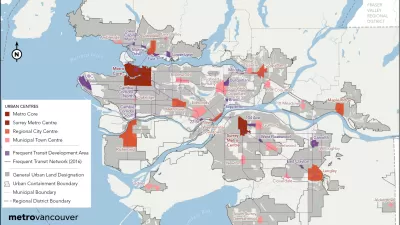A 20-year, voluntary, bottom-up, large-scale, long-term planning effort in Utah has managed to bridge the divide between Mormons and non-Mormons, environmentalists and mining interests, farmers and city-dwellers.

Collin Woodward, a contributing editor with Politico Magazine and author of five books, writes about the 20-year land use planning effort undertaken in the state of Utah. The effort was intended to conserve water use, promote clean air and avoid the destruction of open spaces by slashing housing lot sizes, encouraging higher-density development, and imposing new taxes to build a light rail network and commuter rail system from scratch.
Using a "voluntary, bottom-up, large-scale and long-term—has clicked with the people of a conservative state and bridged historic divisions between Mormons and non-Mormons, environmentalists and mining interests, farmers and city-dwellers. And it came out of an unlikely gathering 30 years ago. Some of the most influential figures in a staid and recession-shocked state came together at a dude ranch owned by the man who was the model for American fiction’s most famous bulldozer-destroying environmental activist."
Growth continues in Utah, writes Woodward: "[T]he challenge ahead is daunting. Last month, the Census Bureau revealed Utah was the fastest growing state in the country, and the majority of the growth is due to its people having the nation’s highest birth rate. Projections show Utah will nearly double its population to 5.4 million by 2050, further compounding the challenge of maintaining the quality of life its people treasure. So in 2013, current Governor Gary Herbert asked Envision Utah to do their magic again, only this time working statewide to determine what Utahns want the place to look like at mid-century."
FULL STORY: How Mormon Principles and Grassroots Ideals Saved Utah

Planetizen Federal Action Tracker
A weekly monitor of how Trump’s orders and actions are impacting planners and planning in America.

Congressman Proposes Bill to Rename DC Metro “Trump Train”
The Make Autorail Great Again Act would withhold federal funding to the system until the Washington Metropolitan Area Transit Authority (WMATA), rebrands as the Washington Metropolitan Authority for Greater Access (WMAGA).

DARTSpace Platform Streamlines Dallas TOD Application Process
The Dallas transit agency hopes a shorter permitting timeline will boost transit-oriented development around rail stations.

The Tiny, Adorable $7,000 Car Turning Japan Onto EVs
The single seat Mibot charges from a regular plug in about as much time as an iPad, and is about half the price of an average EV.

Supreme Court Ruling in Pipeline Case Guts Federal Environmental Law
The decision limits the scope of a federal law that mandates extensive environmental impact reviews of energy, infrastructure, and transportation projects.

Texas State Bills to Defund Dallas Transit Die
DART would have seen a 30% service cut, $230M annual losses had the bills survived.
Urban Design for Planners 1: Software Tools
This six-course series explores essential urban design concepts using open source software and equips planners with the tools they need to participate fully in the urban design process.
Planning for Universal Design
Learn the tools for implementing Universal Design in planning regulations.
Roanoke Valley-Alleghany Regional Commission
City of Mt Shasta
City of Camden Redevelopment Agency
City of Astoria
Transportation Research & Education Center (TREC) at Portland State University
US High Speed Rail Association
City of Camden Redevelopment Agency
Municipality of Princeton (NJ)




























